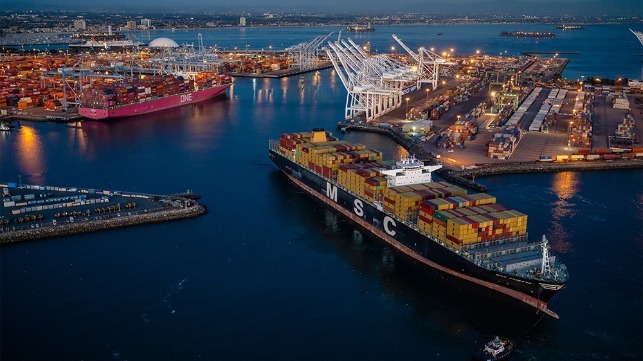Port of Long Beach Sets 110-Year Record in February

Continuing the trend of monthly records, the Port of Long Beach reported the busiest February in its 110-year history. The port achieved several new records with the outlook for volumes and traffic remaining high in the coming weeks.
According to port officials, although activity typically slows in February as east Asian factories close for up to two weeks to celebrate the Lunar New Year, this year Chinese factories and ports largely worked through the holiday to fill backorders and meet the increasing demands of consumers ordering items online.
An unseasonable surge in cargo lifted the Port of Long Beach to its busiest February on record. The port also recorded the largest year-over-year increase for a single month in its history. This February was also the first time the Port of Long Beach handled more than 700,000 TEUs in February, exceeding the previous record set in February 2018 by 109,945 TEUs.
In total, the port moved 771,735 TEUs which was better than a 43 percent increase year-over-year. Loaded inbound containers made up most of the volume rising by more than 50 percent while the rush to get containers back to Asia to load more goods contributed to more than a 70 percent increase in outbound empties. The lopsided nature of trade was reflected in the nearly five percent decline in loaded outbound volumes.
“The supply chain workforce is giving its all to keep the cargo moving, even as their ranks are hit by the pandemic. New records are being set, demonstrating how busy they have been,” said Mario Cordero, Executive Director of the Port of Long Beach.
Despite the efforts of the port and terminals to begin to catch up on the backlog and break the logjam, the onslaught of traffic is continuing. The Marine Exchange of Southern California, which supervises traffic arriving at the San Pedro Bay complex, reported this morning that there continues to be 31 containerships at anchor in the bay waiting for space at the terminals. The number has remained steady at around 30 with today for example five containerships expected to move from the anchorage to the terminals while five more boxships were expected to anchor off the ports.
The Port of Long Beach’s WAVE (Weekly Advance Volume Estimate) is showing a slight lull this week with just over 81,000 loaded import TEUs expected but in each of the next four weeks the estimate ticks back up to between 90,000 and nearly 94,000 TEU. Loaded exports remain steady at around 24,000 TEU while empties are running at approximately 60,000 TEU per week. Weekly vessel calls vary between 19 and 20 ships.
The ongoing backlog experienced at the Southern California ports is impacting retailers and other businesses waiting for their shipments. Big box warehouse retailer Costco recently told investors that, “Overseas freight has continued to be an issue in regards to container shortage and port delays. This has caused timing delays on certain categories." Among the staple items that Costco warned that consumers might find in short supply in its stores is everything from cheese and other foodstuffs to furniture, lawn and garden items, and sporting goods.
“We understand that shippers are awaiting their cargo, and we are collaborating with our industry partners to deliver shipments as quickly as possible,” said Cordero. He is also continuing to advocate for prioritizing front-line workers, including the dockworkers and terminal operators, to receive COVID-19 vaccinations to ensure that the port remains fully staffed to maintain the flow of cargo during the current surge.
